Shanghai: A Harmonious Blend of Tradition and Modernity
History has cast Shanghai as a monetary hub, but culturally it brings together people from all parts of the world. Languages, cuisines, and cultural expressions burst forth from the streets of this city, which is a melting pot that Shanghai has turned itself into
11/11/202411 min read

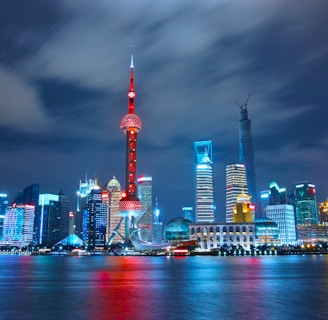
Introduction to Shanghai's Unique Duality
Shanghai has often been referred to as the Paris of the East. It is a city that conjures an alluring blend of ancient traditions and contemporary sophistication. This cosmopolitan city with over 24 million residents is a microcosm of China's historical evolution and rapid modernization. The deeper one travels within this bustling city, the richer its heritage and innovative spirit seem to be, intricately interwoven into a tapestry of old and new.
At the heart of Shanghai's appeal, historic neighborhoods face modernization head-on, as traditional Chinese architecture stands directly next to grand modern skyscrapers. Places like the Bund boast an iconic waterfront promenade that contains colonial-era buildings reflecting the city's past, strongly contrasted by the shimmering silhouettes of futuristic towers like the Shanghai Tower and Oriental Pearl Tower. While this architectural discourse narrates the history of the city, it makes further relentless progress into the future, and Shanghai becomes a paradigm of shifting urbanism.
Moreover, cultural expressions in the city underline that duality. For example, amidst the ancient silent temples, such as the Jade Buddha Temple, anyone who visits these places is engulfed in an environment of spiritual serenity in the midst of the hustle and bustle of the city. Or they might visit bustling markets and a modern art district, such as M50, where the latest creativity explodes. Such a mix of traditional conventions with full-on state-of-the-art innovations produces a vibrant lifestyle that lures both natives and visitors. Each turned corner in Shanghai holds some sort of enchanting story, pushing one to appreciate the delicate balance between tradition and modernity defining this remarkable city.
Historical Overview of Shanghai
History relates in painful detail how Shanghai was transformed from an inconspicuous fishing village into one of the most dynamic metropolises in the world. Because of its port, the ability of the city can be traced back to the 5th century, enabling regional trade. It was during the Song Dynasty, in the 13th century, that Shanghai began its rise to economic significance and thus spurred its rapid development. However, it wasn't until the 19th century that Shanghai really burst onto the global stage.
The Opium Wars played an important part in Shanghai's development. The Treaty of Nanking in 1842 opened the city to foreign trade and initiated the foreign concessions. This not only imported different cultures but started a mix of architectural styles seen today in unique colonial buildings along the Bund. The presence of foreign powers changed the texture of Shanghai, infusing the city with a kind of cosmopolitanism that made it the first major city in China to confront modernity.
The late 19th and the early 20th centuries saw the great flowering of Shanghai into being a commercial and cultural center. The coming of foreign investments during this period saw the emergence of banks, schools, and newspapers, further affording it the prefix "Paris of the East." Prominent figures, such as Dr. Sun Yat-sen, had played vital roles in shaping the politics during this period. The city also endured extreme social changes, its identity intermingling Eastern traditions with those from the West.
During the 20th century, Shanghai was in the eye of storms-mostly World War II and later, the rise of the Communist Party. Today, Shanghai stands as a statement of resilience, merging modern skyscrapers with well-preserved historical sites into one city-a unique narrative of tradition and innovation.
Exploring Traditional Chinese Architecture
From the dazzling skylines of modern architecture to the rich tapestries of traditional Chinese architecture, Shanghai boasts an abundance of each. The architectural masterpieces include the classic gardens, ancient temples, and traditional houses called shikumen. Each one of these elements makes vital contributions to the city's cultural identity and really brings forth the level of artistry and craftsmanship in traditional Chinese design.
The Yu Garden, along with other classic gardens within Shanghai, represents the ideal of traditional Chinese landscape design. These typically feature complex rockery formations, tranquil ponds, and flora placed in highly considered places that create a feeling of tranquility and balance. Such gardens would often have exquisitely crafted pavilions and bridges that add to the aesthetic feelings and almost urge one toward the quiet corridors. It is an architectural style that respects nature in an erudite manner, signifying cohesion in the relationship between mankind and nature.
Along with the gardens, Shanghai comprises several ancient temples, among which is the Jing'an Temple. The 3rd-century temple is an architectural wonder with traditional features such as intricate wood carvings and ornately designed incense burners. Such temples represent not only a place of worship but also cultural monuments that retain spiritual and historic tales of the region.
There are also the shikumen houses that manifested in a rather new form of architecture in the 19th century, combining both Chinese and Western traditions. The townhouses of stone gates express the maximum of pragmatism and community living with the emphasis on shared space and social interaction. Often there is a small corridor leading to an inner courtyard, which shows how traditional concepts were realized in modern urban areas.
Therefore, a tour of Shanghai's traditional architecture is a journey into the past, rich in the presence of beauty and cultural importance found in the landmarks. Classical gardens, ancient temples, and shikumen residences jointly manifest the craftsmanship and artistic perception that constitute the hallmarks of Shanghai's architectural heritage.
The Rise of Modern Shanghai
Within the last couple of decades, Shanghai turned itself into such an astonishment that it rose as the global finance hub. The rapid development in only a couple of decades is marked by iconic skyscrapers and advanced infrastructure that restructured the city's skyline. These skyscrapers are the Shanghai Tower, Oriental Pearl Tower, and Shanghai World Financial Center, all showing not just architectural innovation but also the ambition of the city on the world scene.
Technology propels modern Shanghai in terms of urban development. The application of smart city solutions has controlled the flow of traffic, while public transportation includes an extended metro network, which allows people to commute by the millions each day. Digital payment systems, like Alipay and WeChat Pay, have transformed commerce into an accessible transaction easily available to locals and tourists alike. This showcases how much Shanghai embraces technology in order to work its way toward integrating modern convenience into daily life.
Coupled with this rapid urbanization, a string of urban development projects aims at improving the living standard of its people. From a simple land extension on the Huangpu River, Lujiazui has grown into a busy financial square where international companies prosper today, encouraging economic output. These types of transformations create more investment within the sectors of real estate, finance, and tourism, enabling investors across the world.
However, this rapid modernization has not come without its own share of disadvantages. In-migration and rapid development have raised concerns about urban sustainability and cultural preservation. With Shanghai striding confidently into modernity, it addresses the need to retain the rich historical character of the city, so that tradition and modernity can live together in harmony with each other. This continuing negotiation in the realm of tradition and modernity forms the cultural landscape of Shanghai while melding its ancient roots with contemporary aspirations.
Cultural Synthesis: East Meets West
Shanghai is a magnificent example of such a combination of Eastern and Western cultures; some incomparable atmosphere of cosmopolitism attracted people from literally every corner of the world. Foreign influence can be found nearly in every element of daily life, starting from architecture to food and so on. It's a real melting pot where traditions blend together seamlessly. It is a marvelous mixture, which started in the 19th century when Shanghai opened up to international trade and embraced foreign powers and their respective cultures.
Perhaps the most blatant example of such cultural fusion can be seen along the streets of Shanghai in the form of its architectures: skyscrapers like the Oriental Pearl Tower and Shanghai Tower stand tall with historical buildings such as the Bund-a promenade flaunting strikingly beautiful European colonial architecture. This juxtaposition reflects the past, symbolizing present and future: a place where old and new designs are mingled in harmony. Much of Shanghai's cultural landscape is reflected in its neighborhoods; with traditional Shikumen houses restored to independent boutiques and restaurants, this part of Shanghai is representative of its ability to adapt within its cultural landscapes, such as Xintiandi.
This synthesis is most manifested in another aspect of Shanghai: its culinary world. Restaurants across the city create traditional dishes with a Western touch; international chefs, on their side, include local flavors and European techniques. On one plate, one can find a marriage between local delicacies, like dumplings, placed next to gourmet burgers to depict the diversified palate catering to locals and expats alike. It is also reflected in many festivals that Shanghai hosts, such as the Shanghai International Film Festival, celebrating world cinema but retaining its roots in Chinese art and culture.
It is this cultural synthesis that has brought a certain life to the people of Shanghai, balancing themselves within a landscape rich in tradition, yet greatly affected by global trends. The city is truly alive: seamless examples of East meets West create an identity sure to keep changing and adding a little more color to the concrete jungle.
Must-See Sightseeing and Things to Do
The Bund: A waterfront promenade, famous for its colonial-era buildings lining up against the towering skyscrapers of the Pudong district.
Yu Garden: Step back into this beautiful Ming Dynasty garden with its elaborate architecture, peaceful ponds, and lively bazaar. Oriental Pearl Tower: This iconic tower offers breathtaking views of Shanghai's skyline, while a fascinating museum inside the tower depicts the history of the city. Shanghai Tower: Go high up and enjoy stunning views from the second-tallest building in the world.
Nanjing Road: This is the most crowded shopping street in Shanghai, featuring various boutiques, local shops, and traditional markets. To understand China's rich cultural heritage, visit this museum displaying a wide range of ancient artifacts, like ceramics, bronzes, and calligraphy. Whether you are a history enthusiast or shopaholic looking for an ultimate cultural experience, Shanghai has got it all for everyone.
Tianzifang: From being an unassuming arts-and-crafts enclave, Tianzifang has just become one of the hippest places in Shanghai, boasting of innumerable boutique shops, cafes, and art studios. It is a great place to hunt for souvenirs and get a glimpse of Shanghai's creativity.
Water Town of Zhujiajiao: This ancient water town, located just a little ways outside of Shanghai, offers a glimpse into traditional Chinese life with its canals, bridges, and historic buildings-all perfect for a day trip or change of pace.
Shanghai Disneyland: Families won't want to miss Shanghai Disneyland, filled with amazing rides, themed lands, and entertainment suitable for all ages.
Longhua Temple: Being one of the oldest and largest temples in Shanghai, it provides an ideal place to get to know traditional Chinese architecture and culture due to its tranquil atmosphere.
Shanghai has a bit for every taste, be it history, culture, shopping, or just some enthusiasm of the vibes of Shanghai.
Where to stay in Shanghai :
The Ritz-Carlton Shanghai, Pudong: This iconic hotel features sumptuous Art Deco-style rooms with spectacular views of Huangpu River and The Bund. Besides that, it offers an indoor pool, exclusive spa, and a rooftop bar with breathtaking city views1.
The Langham, Shanghai, Xintiandi Nestled in the heart of Shanghai's energetic Xintiandi, The Langham, Shanghai, Xintiandi stylishly combines modern sophistication with classic luxury. Surrounded by glamorous boutiques, galleries, and outdoor cafes, this prestigious hotel is the perfect base from which to explore the dynamic attractions that make Shanghai such a vibrant city1.
The St. Regis Shanghai Jingan This luxurious hotel offers spacious rooms with views of the skyline, marble bathrooms, and a rooftop pool at the heart of Shanghai. There is also a restaurant awarded a star in Michelin on the premises, besides a stylish lounge.
Fairmont Peace Hotel: Even though it's on The Bund, this is a historic property that mixes elegant Art Deco design with modern amenities. Inside, guests can enjoy an indoor pool, a treatment in the Willow Stream Spa, and a meal in one of the six restaurants and bars.3.
The Shanghai EDITION: This stylish hotel provides fashionably equipped rooms, all with free WiFi and a hot tub. It is located near the Bund and East Nanjing Road, making it very convenient for sightseeing around town.
PuLi Hotel and Spa: As an urban resort, this five-star hotel offers accommodation in luxurious rooms with a Michelin-starred restaurant and state-of-the-art health club featuring an infinity pool-perfect for your retreat from metropolitan life.
Shanghai: Where Tradition Meets Modernity
Shanghai has turned into the real pattern of globalization, where several centuries-old traditions go hand in hand and work shoulder to shoulder with the latest achievements of modern life. It is a classic and active combination of historic heritage with its modern component of innovation, which is of particular interest both for guests and business people. The rich history of this city is reflected in its architecture, cultural traditions, and food; all of this is in harmony with the most modern skyscrapers and newest technologies, reflecting dynamic forces that mold urban life today.
Wrapped in its own skin, Shanghai is a bridge between the past and the future. Places like Bund and Yuyuan Garden give a sneak look into the storied past, while places like Shanghai Tower and the futuristic skyline of Pudong stand to speak about the relentless pursuit of progress. This mix of modernity and tradition surely enhances the attractiveness of the city and provides a significant example of the diverse nature of life within an urban context that is driven by globalization.
History has cast Shanghai as a monetary hub, but culturally it brings together people from all parts of the world. Languages, cuisines, and cultural expressions burst forth from the streets of this city, which is a melting pot that Shanghai has turned itself into. This is where tourists get to experience the tapestry of sights and sounds that are symbolic of interconnectedness, which globalization has allowed. Every nook of the city narrates a tale, a story fabricated from threads of its past and threads of aspirations for its future.
It thus follows that Shanghai, in its nutshell, represents something greater than what is typically attributed to it: an able microcosm of globalization. Visiting it will guarantee an experience imbued with the contrastive face and beauty, as one gets firsthand knowledge of how tradition and modernity coexist in an ever-shifting world.
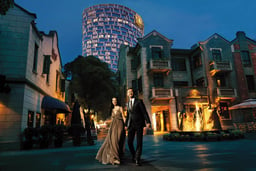





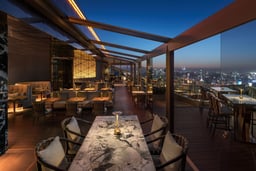

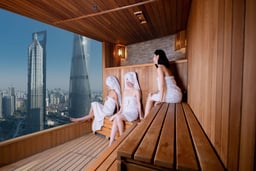

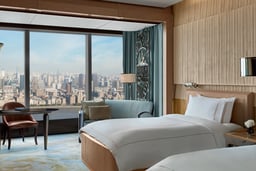

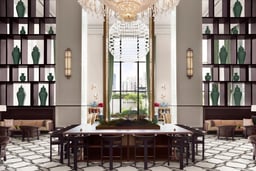

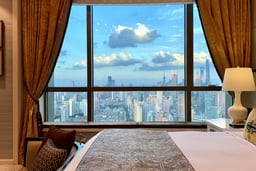

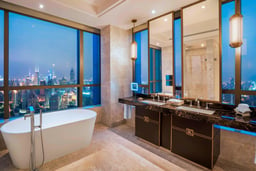

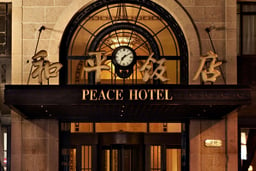



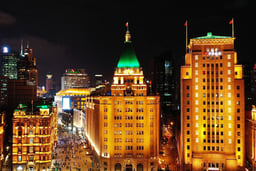

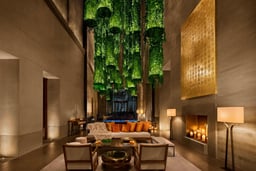



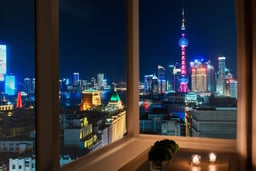

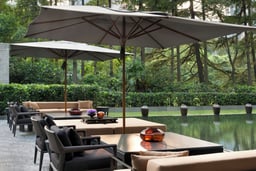



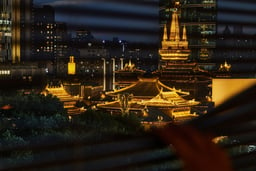

Explore
Travel tips and inspiration for every journey.
Adventure
Connect@scandinaviannomads.com
© 2024. All rights reserved.
